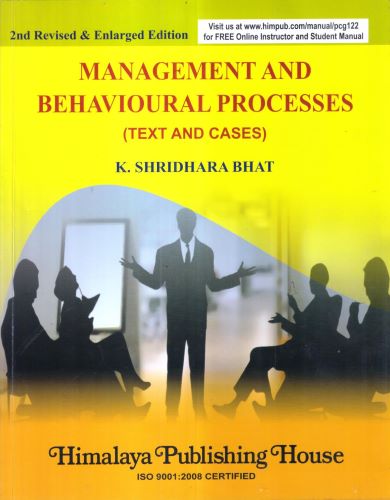Intense international competition in recent years has made managers and their organizations experience and to continue to experience revolutionary changes. Customers, all over the world have become increasingly demanding. They expect high quality. Low prices and short delivery times and more and more value addition to the goods and services they buy from vendors. To achieve these, the corporate sector has a major role in the harnessing of human resource. Management students who would be the future corporate managers need to learn the principles and techniques of management as well as the concepts of human behavior at the workplace. This book is written to help educate students taking their first course in management and organizational behaviour. The salient feature of this book are:
– Topics on ‘Management’ and ‘organisational behaviour’ are comprehensively dealt with.
– Figures and Exhibits illustrate the topics covered.
– Discussion questions help the readers to expand their thinking
– Cases are designed to help readers apply their conceptual knowledge to practical situations.
Contents :
Unit – 1 : Management Concepts
Chapter 1 : Management – An Overview
Chapter 2 : Behavioural Processes – An Overview
Chapter 3 : History and Development of Management and Organizational Behaviour
Chapter 4 : The Managers and Their Environments
Unit – 2 : Planning and Decision Making
Chapter 5 : Managerial Decision Making
Chapter 6 : The Planning Process
Unit – 3 : Organising and Staffing
Chapter 7 : The Organising Process
Chapter 8 : Organisational Structure and Design
Chapter 9 : Human Resource Management and Staffing
Unit – 4 : The Individual in The Organisation
Chapter 10 : Foundations of Individual Behaviour
Chapter 11 : Perception and Individual Decision Making
Chapter 12 : Values, Attitudes and Job Satisfaction
Unit – 5 : Influencing Process
Chapter 13 : Directing (Influencing)
Chapter 14 : Motivation and Behavioural Processes
Unit – 6 : Groups in The Organisation
Chapter 15 : Foundations of Group Behaviour
Chapter 16 : Leadership
Chapter 17 : Communication and Interpersonal Skills
Chapter 18 : Corporate Culture, Change and Development
Unit – 7 : Controlling
Chapter 19 : The Controlling Process
Chapter 20 : Controlling Techniques
Chapter 21 : Special Areas of Management
Chapter 22 : Case Analysis
References
Glossary







